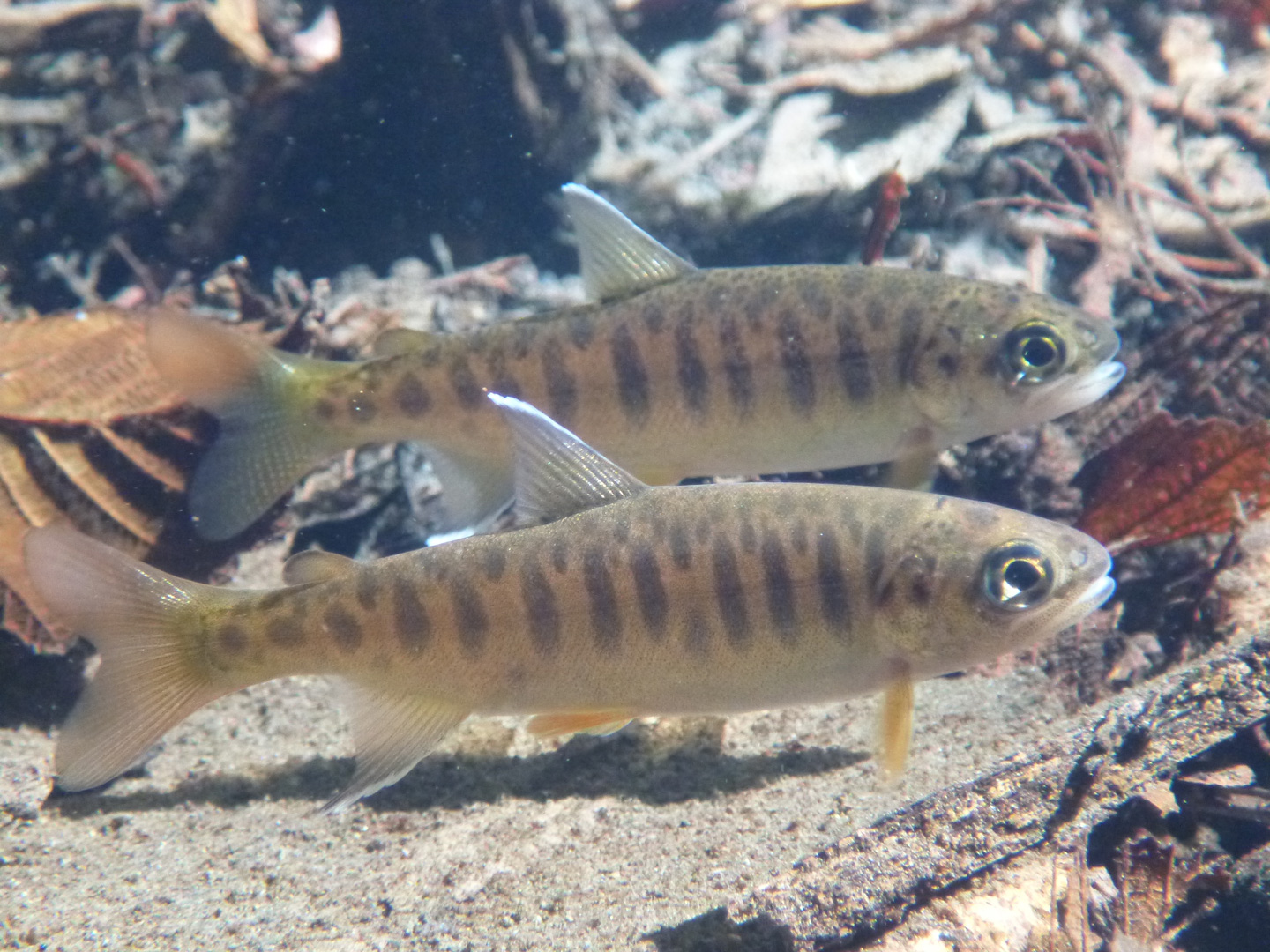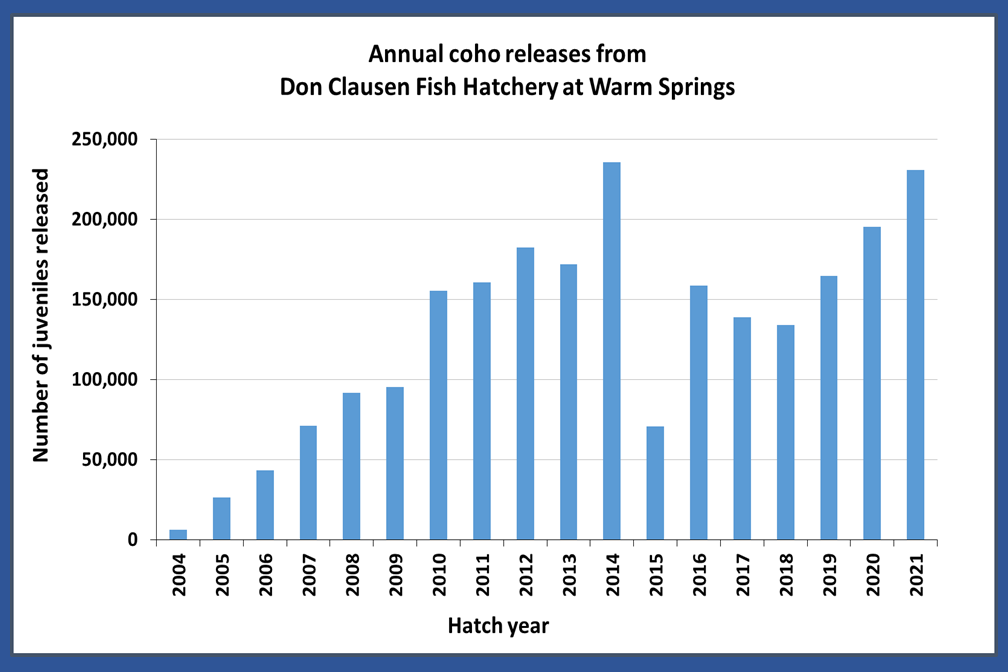Pacific salmon across the west coast have faced tremendous adversity. Since the 1800s, salmon populations have been steadily declining, primarily due to the cumulative impiacts of habitat loss due to land use impacts, as well as overifshing. CA Department of Fish and Wildlife estimates that coho salmon numbers statewide plummeted from as many as 500,000 in the 1940s to as few as 13,000 by 2002.

Coho salmon young of the year in Willow Creek.
The Central California Evolutionarily Significant Unit of coho is listed as endangered by the State and Federal governments. The only remaining viable wild population in this ESU is in Lagunitas Creek, in western Marin County, which supports a small fraction of historic runs. In the Russian River watershed, which historically had the largest population of coho within this ESU, coho were on the brink of extripation by the late 1990s and restoration efforts were expanded to include a broodstock program.
The Russian River Coho Salmon Captive Broodstock Program is a collaborative, conservation hatchery effort that is working to build a self-sustaining coho population within the watershed. Partners include the US Army Corps of Engineers, the National Oceanic and Atmospheric Administration Fisheries Service, the California Department of Fish and Wildlife, Sonoma Water and CA Sea Grant. Since 2001, the Broodstock Program has been breeding coho salmon from local genetic stock at the Don Clausen Fish Hatchery at Lake Sonoma and releasing them as juveniles into historic coho streams in the Russian River watershed.
A group of coho salmon alevin, with intact egg sacks still visible.
Coho salmon are carefully spawned and reared for the Russian River Coho Salmon Captive Broodstock Program by our US Army Corps of Engineers (USACE) partners at the Don Clausen Fish Hatchery at Warm Springs Dam. Program fish are reared using restoration hatchery techniques, then planted into select tributaries to the Russian River as juveniles (young-of-the-year and smolts).
For questions specific to hatchery rearing and fish releases, please email Ben White, at Benjamin.c.white@usace.army.mil.

Annual coho releases from Don Clausen Fish Hatchery at Warm Springs from 2004 to 2021
Sarah Nossaman Pierce releasing young-of-the-year coho into Porter Creek.
Sea Grant's role in the Broodstock Program is to monitor wild and broodstock salmon in the stream environment to evaluate the efficacy of the program, and to work with program partners to apply advances in scientific knowledge to its management. Monitoring activities include spring downstream migrant smolt trapping, summer snorkel surveys and winter spawner surveys. Biologists also use PIT-tag technology to track program fish with Passively-Integrated Transponder tags at all life stages through the use of channel-spanning antennas and handheld transceivers.
